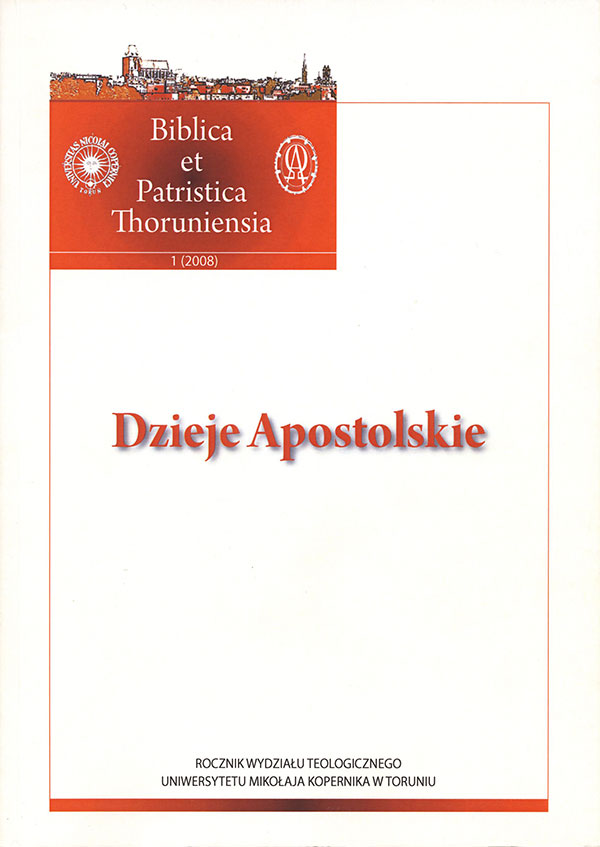Tajemnice narracji pierwszoosobowej czyli periplus w Dziejach Apostolskich
DOI:
https://doi.org/10.12775/BPTh.2008.002Abstract
The Acts of the Apostles cointain thepassages in the firstperson pluralnarration–16,10-17;20,5-15;21,1-18;27,1–28,16. Thepresenceof this narration coincidences with a sea voyages. Sea journey appears often in Greek and Romanliterature–so for example in Homer’s Odyssey,in works of Alcaeus,Mimnermos,Vergil,Petronius,Lucian,Heliodor. Oneof the primary features of this genre–theso-called periplus–is the presence of firstperson plural narration;other features are: the beginning of the sailing,halting places of the journey,landing at the places,meeting with local inhabitants and resuming the voyage. Theauthor of Luke-Acts employs his periplus with great skill and uses firstperson pluralas the stylistic componentof this genre. However,the first person plural narration in the Acts makes often a transition to third person narration or to a speech. The third person narration and a speech within the“we-passage” are a kind of the excurses. The third person narration appears also in the episodes recounting Paul’s overland travels;these episodes belong to the main action. The usageof the first and the third person narration according to the generic convention suggests that the author of Luke-Acts is a versatile Hellenistic writer who is an intelligent participantin the literary arena of Mediterranean culture.
Downloads
Veröffentlicht
Zitationsvorschlag
Ausgabe
Rubrik
Lizenz
CC BY ND 4.0. Posiadaczem prawa autorskiego (Licencjodawcą) jest Autor, który na mocy umowy licencyjnej udziela nieodpłatnie prawa do eksploatacji dzieła na polach wskazanych w umowie.
- Licencjodawca udziela Licencjobiorcy licencji niewyłącznej na korzystanie z Utworu/przedmiotu prawa pokrewnego w następujących polach eksploatacji: a) utrwalanie Utworu/przedmiotu prawa pokrewnego; b) reprodukowanie (zwielokrotnienie) Utworu/przedmiotu prawa pokrewnego drukiem i techniką cyfrową (e-book, audiobook); c) wprowadzania do obrotu egzemplarzy zwielokrotnionego Utworu/przedmiotu prawa pokrewnego; d) wprowadzenie Utworu/przedmiotu prawa pokrewnego do pamięci komputera; e) rozpowszechnianie utworu w wersji elektronicznej w formule open access na licencji Creative Commons (CC BY-ND 3.0) poprzez platformę cyfrową Wydawnictwa Naukowego UMK oraz repozytorium UMK.
- Korzystanie przez Licencjobiorcę z utrwalonego Utworu ww. polach nie jest ograniczone czasowo ilościowo i terytorialnie.
- Licencjodawca udziela Licencjobiorcy licencji do Utworu/przedmiotu prawa pokrewnego nieodpłatnie na czas nieokreślony
PEŁEN TEKST UMOWY LICENCYJNEJ >>
Stats
Number of views and downloads: 549
Number of citations: 0



